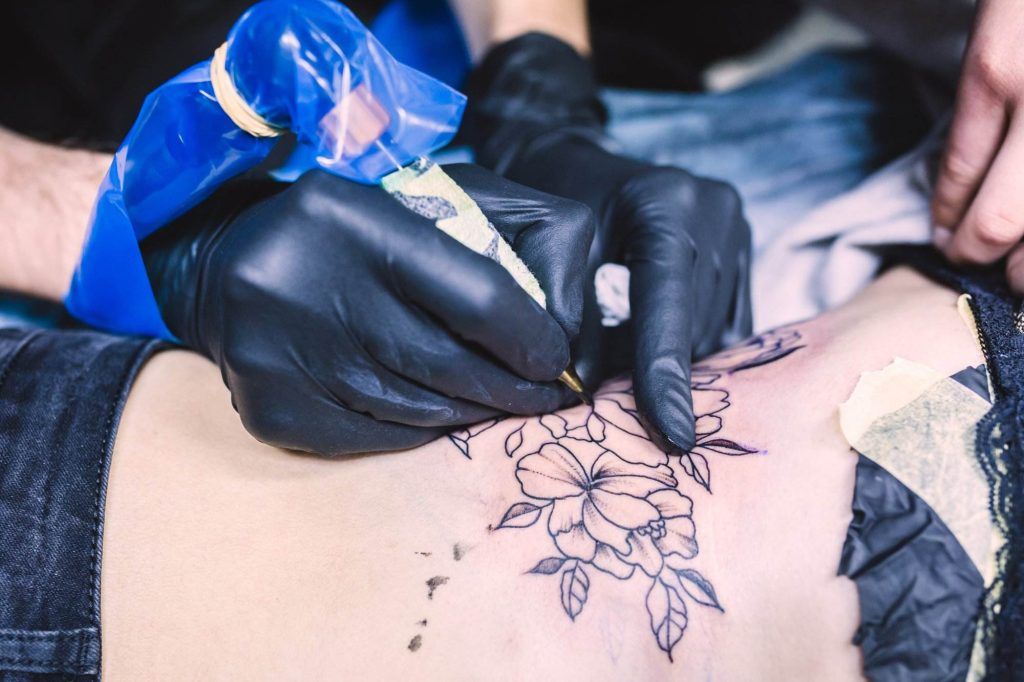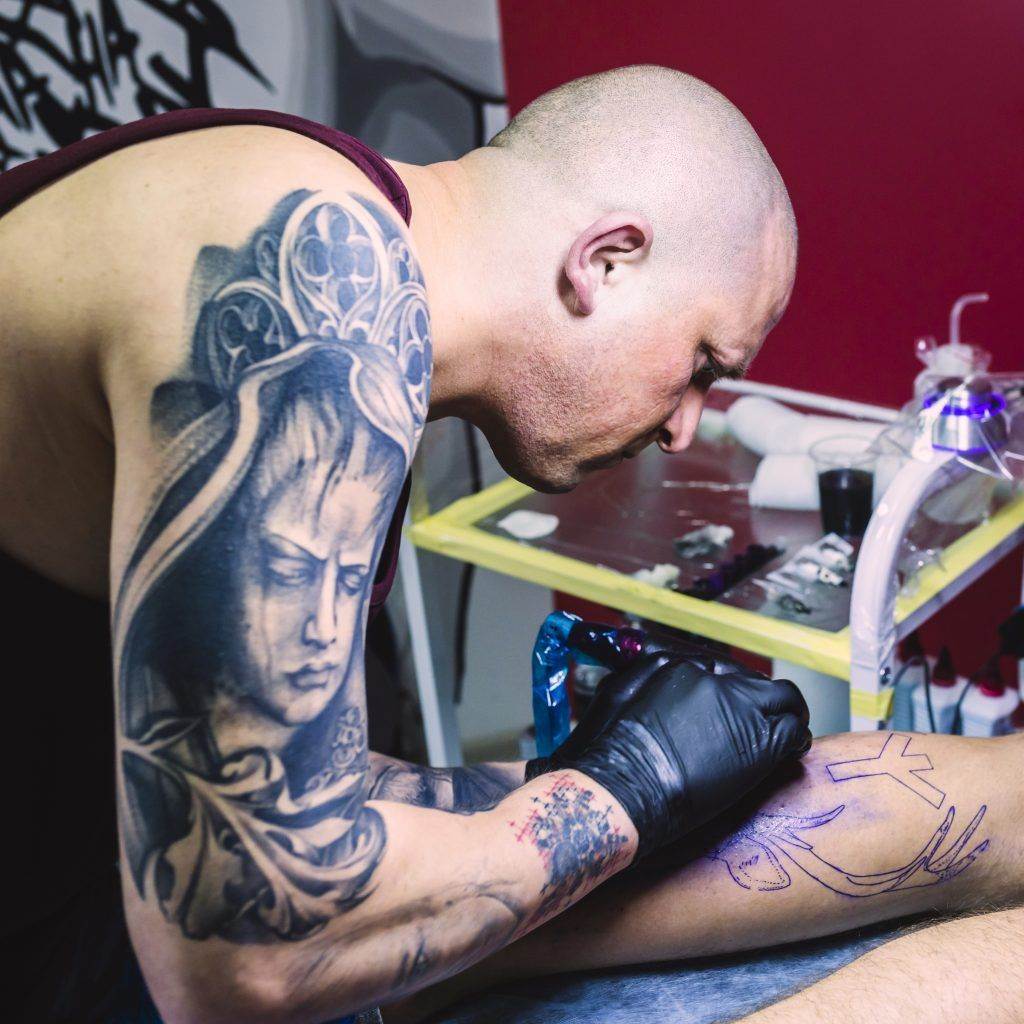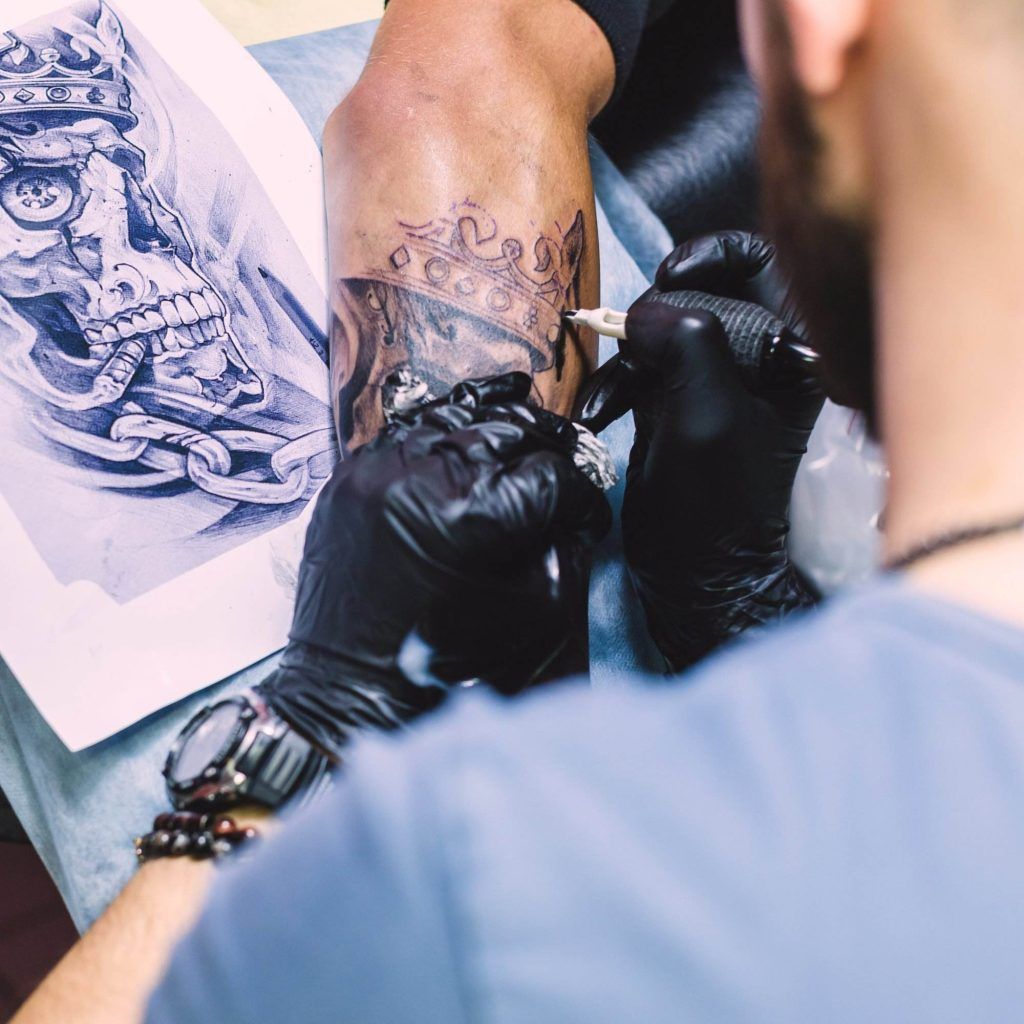Introduction
Understanding the Tattoo Session Process
Embarking on the journey of getting a tattoo is both thrilling and daunting. It’s essential to have a clear understanding of what a typical tattoo session entails to alleviate any pre-appointment jitters. Typically, the process starts with a consultation where you discuss your design ideas, placement preferences, and any concerns you might have with the tattoo artist. This discussion is crucial as it sets the stage for the entire session. Once you finalize your design, you will move to the actual tattoo appointment where the exciting transformation takes place. The experience involves:
- Setting Up: The artist prepares their workspace, ensuring all equipment is sterile and ready.
- Skin Preparation: The area will be cleaned and possibly shaved to ensure a clean canvas.
- Tattooing Process: The artist skillfully uses their tools to implement your chosen design, which is where the magic truly happens.
Understanding this process can help manage your expectations and make your tattoo session a more enjoyable experience.

Importance of Preparation
Preparation is key when it comes to making the most of your tattoo session. It plays a pivotal role in ensuring the entire experience runs smoothly. Here’s why preparation is essential:
- Physical Readiness: Arriving at your session well-rested, hydrated, and having eaten a nutritious meal can significantly affect your comfort levels during the tattoo process.
- Mental Readiness: Familiarizing yourself with the design and the potential pain involved can mitigate anxiety. A calm mindset allows you to enjoy the experience fully.
- Aftercare Knowledge: Understanding pre- and post-care instructions is vital for ensuring your new tattoo heals properly and lasts for years to come.
By taking the time to prepare appropriately, you set the foundation for a successful tattoo journey, making it a memorable and fulfilling experience.
Choosing the Right Tattoo Design
Researching Tattoo Styles
After you’ve prepared for your tattoo session, the next step is diving deep into the world of tattoo designs. This is where the fun begins! Exploring various tattoo styles allows you to pinpoint what resonates with your personality and aesthetic. Each style tells a story and has its own unique flair. Consider these popular styles as starting points:
- Traditional: Bold outlines and bright colors, often featuring American symbols.
- Realism: Life-like depictions of subjects that can be truly breathtaking.
- Watercolor: A softer look, blending colors without outlines, resembling a watercolor painting.
- Geometric: Clean lines and intricate patterns that create a modern aesthetic.
- Tribal: Based on cultural motifs and patterns, often rich in meaning.
As you research, create a mood board or a digital folder of designs that captivate you. This will help you visualize your preferences and serve as a helpful reference for your tattoo artist.
Consulting with a Tattoo Artist
Once you’ve settled on some potential designs, the next step is to consult with your tattoo artist. This meeting is crucial in bringing your vision to life. A skilled artist can offer valuable insights based on their experience and expertise. Here’s what to keep in mind during your consultation:
- Discuss Your Ideas: Share your mood board and talk about what you love about each design.
- Be Open to Suggestions: An artist may suggest modifications or improvements that enhance the final look.
- Placement Matters: Consider where you want the tattoo. Certain designs work better on specific body parts.
- Ask Questions: Inquire about any concerns you may have, such as pain expectations or healing times.
This collaboration not only refines your tattoo idea but also builds a rapport with your artist. A well-thought-out design, combined with professional guidance, sets the stage for a stunning tattoo that reflects your individuality.
Selecting a Reputable Tattoo Studio
Factors to Consider in Choosing a Studio
Now that you have a solid design in mind, finding the right tattoo studio is a crucial next step. This decision significantly impacts your overall experience and the quality of your tattoo. Here are some important factors to consider:
- Reputation: Check online reviews and testimonials. A studio with positive feedback and satisfied clients is generally a reliable choice.
- Portfolio: Review the artists’ portfolios to ensure their style aligns with your vision. Look for consistency in quality and a range of different designs.
- Experience: Consider how long the studio has been operating and the experience level of the artists. Veteran artists often have the skills necessary to tackle intricate designs.
- Comfortable Atmosphere: Visit the studio beforehand. It should have a welcoming, friendly vibe that puts you at ease. You’ll want to feel comfortable in the space where you’ll be getting inked.
Choosing the right studio plays a big role in ensuring that your tattoo experience is enjoyable and memorable.

Ensuring Hygiene and Safety Practices
One of the most critical aspects of selecting a tattoo studio is assessing their hygiene and safety standards. This cannot be overstated; your health is paramount. Here are key practices to ensure the studio maintains a clean environment:
- Sterilization Procedures: Inquire about their sterilization methods for equipment. Needles should be single-use, and tools should be properly sanitized.
- Cleanliness: Observe the overall cleanliness of the studio. This includes the workstations, waiting areas, and restrooms. A tidy environment is a good sign of a professional establishment.
- Artist Sanitization: Ensure that the tattoo artist practices good hygiene, such as thoroughly washing their hands and wearing gloves during the tattooing process.
- Health Inspections: Check if the studio adheres to local health regulations and has passed required inspections.
By prioritizing hygiene and safety, you can engage in the tattoo process with peace of mind, allowing you to focus on the excitement and artistry of your new tattoo.
Pre-Tattoo Session Preparation
Proper Skin Care Before the Appointment
Preparing your skin is a vital aspect of your pre-tattoo session routine that often goes overlooked. Having healthy skin not only promotes a better tattooing experience but also contributes to the ultimate quality of the tattoo itself. Here are a few skin care tips to consider in the days leading up to your appointment:
- Hydrate Your Skin: Keep your skin well-moisturized with a good quality lotion. Dry skin can lead to irritation and may affect how the ink adheres to your skin.
- Avoid Sun Exposure: Stay out of direct sunlight to prevent sunburn or skin damage. A sunburnt area will be more sensitive, making the tattooing process uncomfortable.
- Exfoliate Gently: A light exfoliation can help remove dead skin cells, allowing for better ink absorption, but avoid harsh scrubs right before your appointment.
- No Alcohol or Drugs: Avoid alcohol and recreational drugs in the days leading up to your session, as they can affect your blood flow and increase sensitivity.
Taking these steps helps prepare your skin and ensures a smoother tattooing process.
Following Aftercare Instructions
Once you’ve received your tattoo, the next crucial stage is proper aftercare. Following the tattoo artist’s aftercare instructions is essential for healing and longevity. Here are some common aftercare practices to keep in mind:
- Keep It Clean: Gently wash the tattoo with mild soap and water, avoiding harsh chemicals and fragrances.
- Moisturize: Apply a recommended ointment or moisturizer to keep the tattoo hydrated and prevent scabbing.
- Avoid Scratching: As the tattoo heals, it may itch. Resist the urge to scratch, as this can damage the design and lead to infections.
- Stay Out of Water: For the first few weeks, bathe without submerging your tattoo in water, such as in pools or hot tubs, to avoid exposing it to bacteria.
By following these aftercare instructions diligently, the integrity of your tattoo will be preserved, allowing it to look fresh and vibrant for years to come. Proper preparation and aftercare are the keys to ensuring your tattoo journey is enjoyable and successful.
The Tattoo Session: What to Expect
Step-by-Step Overview of a Typical Session
When the day of your tattoo appointment arrives, excitement mingles with a touch of nerves. Understanding what to expect can make the experience feel more manageable. Typically, a tattoo session follows these steps:
- Arrival and Preparation: Upon arrival, the artist will greet you and confirm your design and placement. This is a good time to ask any last-minute questions.
- Skin Preparation: The artist will clean the designated area and shave it if necessary, ensuring a smooth canvas for the tattoo.
- Stencil Application: A stencil of your design will be applied to your skin, allowing you to visualize the placement before the actual tattooing begins.
- Tattooing: Once you’re satisfied with the stencil, the artist will start the tattooing process. Depending on the complexity of the design, this can take anywhere from a few minutes to several hours.
- Final Touches: After completing the tattoo, the artist will clean the area again, apply an ointment, and cover it with a bandage to protect it during initial healing.
Knowing these steps can help set your expectations and reduce anxiety during the session.
Managing Pain and Discomfort
It’s natural to be concerned about pain during the tattooing process. While pain tolerance varies from person to person, there are several strategies to help manage discomfort:
- Discuss with Your Artist: If you’re anxious about pain, talk to your artist beforehand. They can offer reassurance and may suggest breaks if needed.
- Deep Breaths: Practicing deep breathing techniques can help soothe your mind and body during the tattoo session, allowing you to relax.
- Distractions: Bring headphones and listen to music or podcasts to keep your mind occupied while the tattoo is being done.
- Numbing Creams: Some studios offer topical anesthetics that can help minimize pain. If you’re very concerned, discuss this option with your artist.
The tattoo session is an exciting process filled with anticipation. By preparing yourself and understanding what to expect, you can enjoy the artistry and process of getting your new tattoo. Embrace the journey, and soon you’ll be wearing your unique artwork with pride!
Post-Tattoo Session Care
Understanding Proper Healing and Recovery
Now that you’ve successfully completed your tattoo session, it’s essential to focus on post-tattoo care to ensure proper healing and recovery. Understanding how your tattoo heals can make a world of difference in maintaining the vibrancy and integrity of your new art. Typically, the healing process unfolds in the following stages:
- Initial Healing (1-2 Weeks): In the first week, your tattoo will likely feel tender and may be slightly swollen. You might also notice some oozing as your body begins to heal the area. It’s crucial to keep the tattoo clean and moisturized, as a healing tattoo is delicate.
- Peeling Stage (2-3 Weeks): As the tattoo starts to heal, it may begin to peel. This is a normal part of the healing process where the outer layer of skin sloughs off. Avoid picking or scratching, as this can damage the tattoo and lead to scarring.
- Complete Healing (4-6 Weeks): Most tattoos will fully heal within four to six weeks. However, everyone’s skin is unique, and healing times can vary. During this time, continue to moisturize and protect your tattoo from sun exposure to promote healthy regeneration.
Avoiding Common Mistakes
While you’re excited to show off your new ink, there are common mistakes to avoid during the healing process:
- Overexposure to Water: Refrain from soaking your tattoo in baths, pools, or hot tubs for at least two weeks to prevent infections.
- Scratching: Resist the urge to scratch or peel the tattoo, as this can lead to uneven healing and affect the design.
- Using Harsh Products: Avoid using alcohol-based products, strong soaps, or fragrances on the tattooed area in the early healing stages.
- Neglecting Moisturization: Failing to keep the tattoo moisturized can lead to excessive dryness and cracking, which compromises the artwork.
By following proper care guidelines and avoiding these common pitfalls, you ensure that your tattoo heals beautifully, allowing you to appreciate your artwork for years to come. Taking the time for post-care reflects your commitment to the piece—and it’s a rewarding process!
Touch-Up Sessions and Maintenance
Reasons for Touch-Up Sessions
Once your tattoo has healed and you’ve had the chance to show it off, you might think the journey ends there. However, touch-up sessions are an integral part of maintaining the integrity of your tattoo. Touch-ups can become necessary for several reasons:
- Fading Over Time: Tattoos can fade due to exposure to sun, natural skin oils, and everyday wear and tear. A touch-up can help restore the vibrancy of colors and details, especially for tattoos located in areas frequently exposed to sunlight.
- Healing Issues: Sometimes, during the healing process, a tattoo may not heal as intended, resulting in patchy areas or light spots. A touch-up session can correct these imperfections and help ensure the design looks as intended.
- Changes in Skin Texture: As we age, our skin changes. Factors such as weight fluctuations or skin conditions can affect how a tattoo appears over time. Touch-ups can help adapt the tattoo to these changes, ensuring it remains aesthetically pleasing.
Scheduling a touch-up, typically 4-6 weeks after your tattoo has fully healed, can prolong the lifespan of your artwork.

Maintaining the Longevity of Your Tattoo
To keep your tattoo looking its best for years, consistent maintenance is crucial. Here are several tips to ensure your tattoo stands the test of time:
- Apply Sunscreen: Protecting your tattoo from sun exposure is vital. Use a broad-spectrum sunscreen with at least SPF 30 on your tattoo whenever you’ll be outdoors.
- Moisturize Regularly: Keeping your skin hydrated helps the tattoo remain vibrant. Choose a fragrance-free moisturizer that won’t irritate your skin.
- Consider Lifestyle Factors: If you’re regularly active in swimming pools or hot tubs, remember that these can promote faster fading. Taking steps to minimize exposure can be beneficial.
- Healthy Skin Care Routine: Maintain a healthy skincare routine overall, as this also affects how your tattoo ages.
By investing time in touch-up sessions and employing consistent maintenance practices, you ensure that your body art remains as stunning as the day you got it. Embracing your tattoo as a lifelong commitment truly enriches the journey of self-expression!
